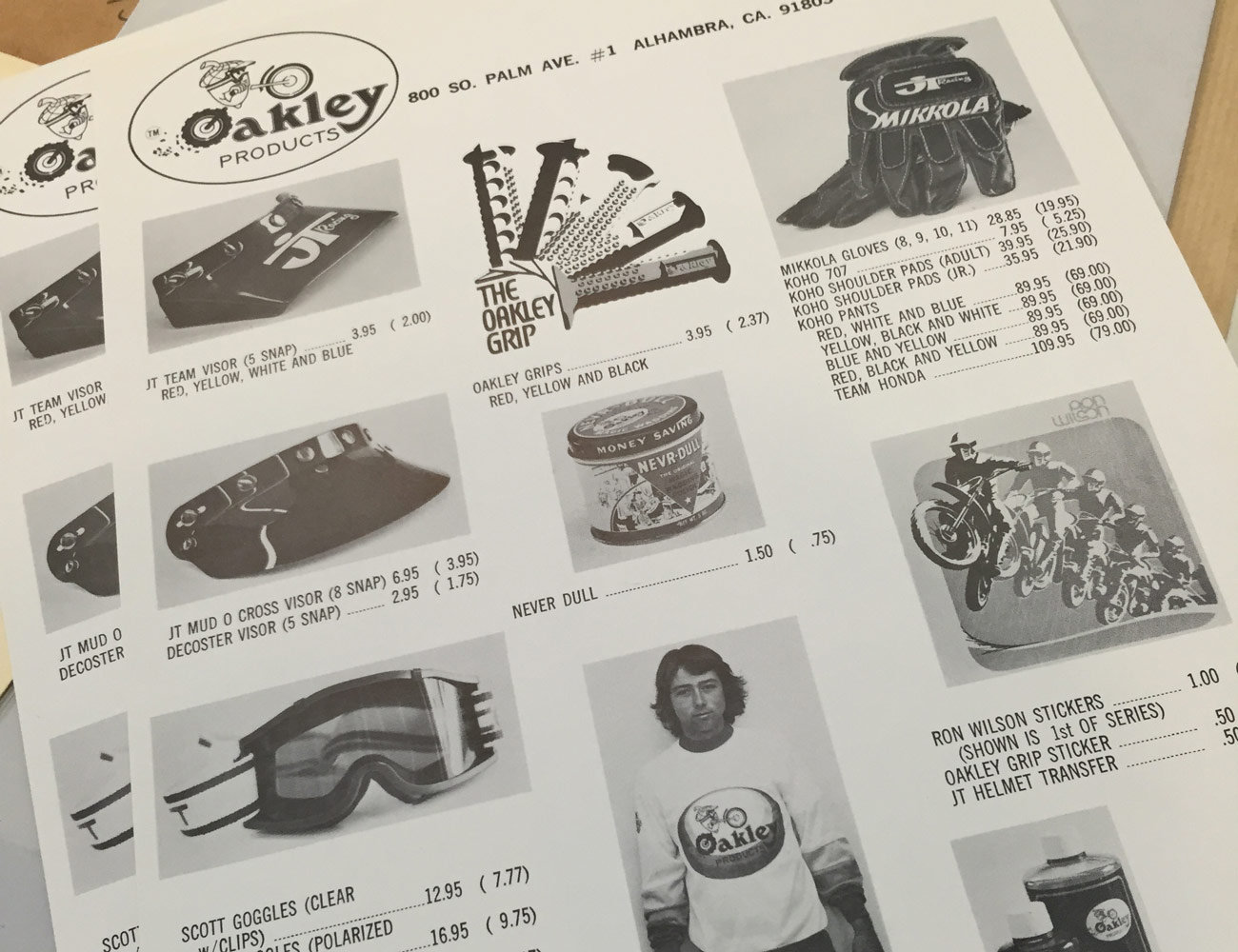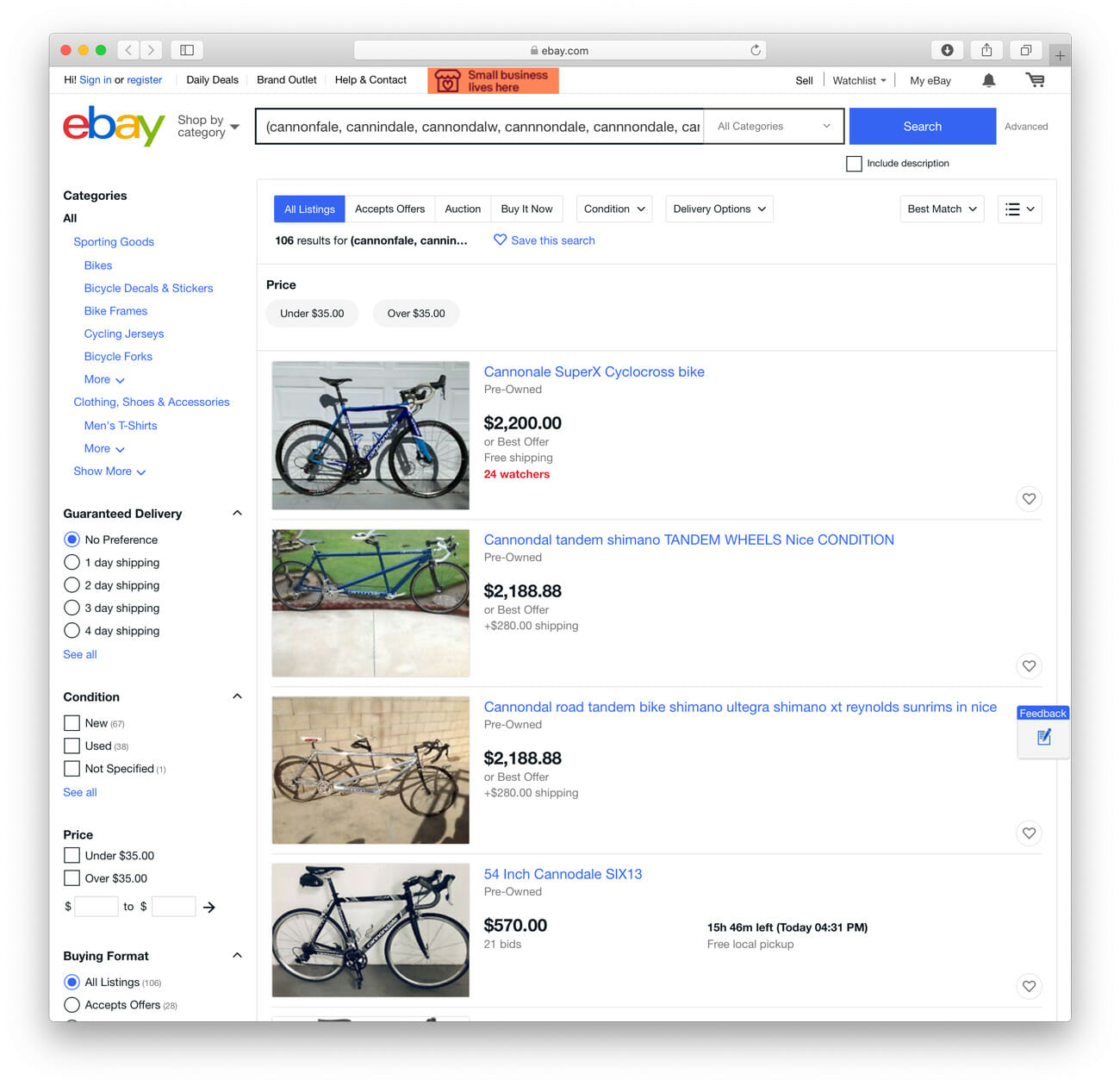Like many multi-billionaires, Jim Jannard is somewhat reclusive. But back in the mid-1970s, you could find him at motocross events around Southern California, hocking motorcycle gear out of his Honda Civic under the banner of a company named after his English setter, Oakley.
It wasn’t a total man-with-a-van job; Oakley Products had catalogs — complete with a logo of an acorn riding a dirt bike — from which riders and vendors might purchase JT Racing gear, Scott goggles, Koho pads or Mikkola gloves.


Oakley the English setter
Eventually, though, Jannard decided to make a product of his own. At the time, handlebar grips were essentially just rubber sleeves. Jannard imagined something better. After all, if bike control comes from the handlebars, shouldn’t that crucial point of contact be made of something more evolved?
So he created the Oakley Grip, which was anatomically shaped and tactile with tentacle-inspired suction cups. One grip, the B-1B, was described as “the first motocross guidance system.”


Brian Takumi, a 14-year Oakley vet who’s currently vice president of its product creative catalyst team, remembers Jannard coming to the bike shop that he used to frequent when he was a BMX freestyle rider. Takumi was close with many riders sponsored by Oakley, and after he eventually joined the company, he worked closely with Jannard for over a decade.
“This idea about ‘define problems, find solutions, wrap them in art’ was always kind of an underlying mantra for him,” he says.
One unsolvable problem with handlebar grips, though, is that they don’t offer much real estate for getting a company’s name out into the world. That realization, plus a passion for photography and optics, initiated Jannard’s jump into goggles. A goggle strap fastened over the side of a BMX rider’s helmet is the perfect place for a logo, so Jannard and his skeleton crew began producing them, screen printing the branding onto straps by hand. Race spectators could read their handiwork from the stands.
Oakley began making snow goggles, too, but it wasn’t until the dawn of performance sunglasses that the company reached, as Takumi puts it, “a different level.” In 1983, Jannard made a sales trip from San Diego to LA and, driving with the sun beaming over the Pacific Ocean on his left, wondered why he couldn’t bring the wraparound style of goggles into a pair of sunglasses.
“He went back to his shop, took a goggle lens, cut out a smaller shape, took some coat hangers, bent them into ear stems, taped them on the goggles, and basically the sport eyewear market was invented right there,” recounts Takumi. “Until that time, nothing had existed like that.”
The production version of Jannard’s taped-together prototype was called the Eyeshade, and when pro cyclist Greg LeMond wore them on his ride to second place at the 1985 Tour de France, its popularity skyrocketed.


The Oakley Eye Jacket
Even as Oakley blossomed beyond anything Jannard could’ve imagined from the back of his Honda Civic — the company currently has around 3,400 employees and its annual revenue tops $1 billion — it preserved a DIY approach to product design. According to Takumi, hands-on methods that might involve sketching and clay modeling have retained their value, even with competition from digital tools.
“The one thing I will say about Jim is, he’s always been one to have a vision,” Takumi concludes. “When you think about people like that, you think about Steve Jobs, Elon Musk — guys like that. I mean obviously, you’re talking about sunglasses and cameras — [Jannard founded Red Digital Cinema in 2005] — but when you have that, really probably the only way to bring it to life is if you have your own hands on it.”
Put that way, it’s not so surprising it all started with bike grips.




